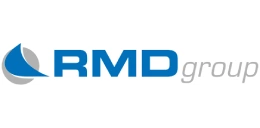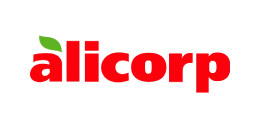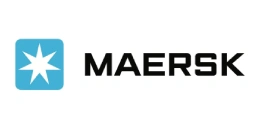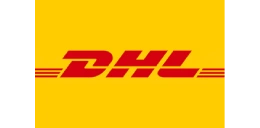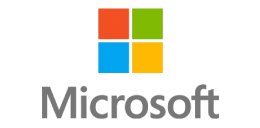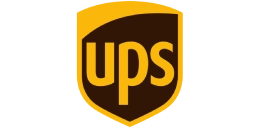Recycled PET Cost Model: From Waste Plastics to Sustainable Value
_11zon.webp)
What is Recycled PET?
Recycled Polyethylene Terephthalate (rPET) is a thermoplastic polymer obtained from post-consumer and post-industrial PET waste, mainly plastic bottles and packaging materials. It is chemically the same as virgin PET, composed of polymerized units of terephthalic acid and ethylene glycol, but is made from a recycling process that minimizes dependence on fossil-based feedstocks.
Key Applications Across Industries:
Major characteristics of rPET are high strength-to-weight ratio, chemical resistance, dimensional stability, and high recyclability. Recycled PET flakes are normally produced by mechanical recycling, where used PET bottles are cleaned, shredded, and reprocessed. These flakes can be processed further into fibers, sheet, strapping, or re-extruded into containers and bottles. Its uses range from textiles, food and beverage packaging, automobile parts, and consumer packaging. Benefits include reduced carbon footprint, lower energy usage than virgin PET production, and promotion of circular economy aims. Economically, rPET offers cost advantages where waste policies favor collection and segregation. With increasing focus on sustainable materials, brand promises on recycled content, and regulatory environments prohibiting single-use plastics, the long-term outlook for recycled PET is strong, making it a vital raw material for sectors seeking to make a cost-efficient yet environmentally conscious choice.
What the Expert Says: Market Overview & Growth Drivers
The global recycled PET market reached a value of USD 21.11 Billion in 2024. According to IMARC Group, the market is projected to reach USD 65.72 Billion by 2033, at a projected CAGR of 13.3% during 2025-2033. Demand for recycled PET is fueled by a number of long-term factors, such as increasing worldwide demand for sustainable packaging material, government regulations that encourage recycled content in beverage and food bottles, and consumer demand for environmentally friendly products.
Growth in textile applications, most notably polyester fiber from rPET, is another key driver because of its prevalence in clothing and home furnishings. The automotive industry is also embracing rPET for lightweight, long-lasting parts to enhance fuel efficiency and reduce emissions. Competitive advantages over the next five years will be redefined by trends like next-generation sorting technologies, integration of chemical recycling, and creation of food-grade rPET. Brands are more and more collaborating with recyclers to lock in supply chains, although risks exist in varying collection rates, contamination issues, and energy-intensive washing and pelletizing processes. On sustainability, recycled PET shows huge greenhouse gas emission reductions versus virgin PET, while responses from the industry are strategic investments in closed-loop recycling plants and use of digital traceability systems to satisfy compliance and quality requirements.
Case Study on Cost Model of Recycled PET Manufacturing Plant:
Objective
One of our clients reached out to us to conduct a feasibility study for setting up a medium-to-large-scale recycled PET manufacturing plant.
IMARC Approach: Comprehensive Financial Feasibility
We developed a comprehensive financial model for the setup and operation of a proposed recycled PET manufacturing plant in Bangladesh. This plant is designed to produce 183 tons of recycled PET per day.
Manufacturing Process: The production process of rPET flakes consists of a series of sequential steps to achieve high purity and quality. It starts with the collection of the waste, whereby used PET bottles and containers are collected from industrial and municipal sources. These are then de-baled to split compressed bundles into single bottles, then metal detected and separated for the removal of caps, closures, or metallic foreign objects. The label remover removes shrink sleeves and labels, and dust removal and prewashing remove surface grime, adhesives, and residues. The material is then sorted, with manual or machine-vision optical systems to sort PET apart from other plastics and color streams. Clean PET bottles are crushed into flakes, which are exposed to an automated hot washing procedure using caustic solutions to extract residual glue, ink, and organics. Once washed, flake sorting separates high-quality PET flakes from impurities or off-color material. The ultimate product is rPET flakes, which are dried and available for use in manufacturing new bottles, fibers, sheets, or other uses. This process of multiple steps is aimed at maximizing yield, purging impurities, and creating food-grade or industrial-grade rPET based on downstream requirements.
_11zon.webp)
Get a Tailored Feasibility Report for Your Project Request Sample
Mass Balance and Raw Material Required: The primary raw materials used in the recycled PET producing plant are used PET bottles, caustic soda, and detergent. For a plant producing 1 ton of recycled PET flakes, 1.30 ton of used PET bottles, 0.01 ton of caustic soda and 0.01 ton of detergent are required.
Techno-Commercial Parameter:
- Capital Investment (CapEx): Capital expenditure (CapEx) in a manufacturing plant includes various investments essential for its setup and long-term operations. It covers machinery and equipment costs, including procurement, installation, and commissioning. Civil works expenses involve land development, factory construction, and infrastructure setup. Utilities such as power, water supply, and HVAC systems are also significant. Additionally, material handling systems, automation, environmental compliance, and safety measures are key components. Other expenditures include IT infrastructure, security systems, and office essentials, ensuring operational efficiency and business growth.
- Operating Expenditure (OpEx): Operating expenditure is the cost incurred to operate a manufacturing plant effectively. Opex in a manufacturing plant typically includes the cost of raw materials, utilities, depreciation, taxes, packing cost, transportation cost, and repairs and maintenance. The operating expenses are part of the cost structure of a manufacturing plant and have a significant effect on profitability and efficiency. Effective control of these costs is necessary for maintaining competitiveness and growth.
_11zon.webp)
- Profitability Analysis Year on Year Basis: The proposed recycled PET plant, with a capacity of 183 tons of recycled PET per day, achieved an impressive revenue of US$ 16.7 million in its first year. We assisted our client in developing a detailed cost model, which projects steady growth, with revenue rising throughout the projected period. Moreover, gross profit margins improve from 13.5% to 28.0% by year 10, and net profit rises from a negative of 11.7% to a positive of 18.4%, highlighting strong financial viability and profitability.
_11zon.webp)
Conclusion & IMARC's Impact:
Our financial model for the recycled PET manufacturing plant was meticulously developed to meet the client’s objectives, providing an in-depth analysis of production costs, including raw materials, manufacturing, capital expenditure, and operational expenses. By addressing the specific requirements of producing 183 tons of recycled PET per day, we successfully identified key cost drivers and projected profitability, considering market trends, inflation, and potential fluctuations in raw material prices. This comprehensive financial model equipped the client with valuable insights into strategic decision-making, demonstrating our commitment to delivering high-quality, client-focused solutions that ensure the long-term success of large-scale manufacturing ventures.
Latest News and Developments:
- In August 2025, global sustainable chemical manufacturer Indorama Ventures Public manufacturer Limited announced that since 2011, it has recycled over 150 billion post-consumer PET bottles. This noteworthy accomplishment demonstrates the company's enduring dedication to circular economy principles and its ongoing investment in international recycling infrastructure.
- In February 2025, the environmental services company Veolia is increasing its PET recycling capabilities throughout Europe. The business is spending money to expand and modernise its facilities in Norrköping, Sweden, and Frauenfeld, Switzerland. To satisfy the rising demand in the food business, more food-grade rPET (recycled PET) is to be produced. Veolia is utilising artificial intelligence at Frauenfeld to enhance the quality of inputs and is incorporating an additional extruder to produce food-grade rPET.
- In November 2024, a new PET recycling facility with a 240-ton daily production capacity has been put into service by Revalyu. It consists of two lines, each of which can produce 120 tonnes per day. Now in operation, the new plant's first line generates 120 tonnes of PET every day that is 100% recycled. The third quarter of 2025 will see the commissioning of the second production line. The Nashik facility in India will become the largest commercial site for chemical recycling of post-consumer PET plastic in the world when combined with the current 40-ton-per-day plant, resulting in a total production capacity of 280 tonnes per day.
Why Choose IMARC:
IMARC's Financial Model Expertise: Helping Our Clients Explore Industry Economics:
IMARC is a global market research company that offers a wide range of services, including market entry and expansion, market entry and opportunity assessment, competitive intelligence and benchmarking, procurement research, pricing and cost research, regulatory approvals and licensing, factory setup, factory auditing, company incorporation, incubation services, recruitment services, and marketing and sales.
Under our factory setup services, we assist our clients in exploring the feasibility of their plants by providing comprehensive financial modeling. Additionally, we offer end-to-end consultation for setting up a plant in India or abroad. Our financial modeling includes an analysis of capital expenditure (CapEx) required to establish the manufacturing facility, covering costs such as land acquisition, building infrastructure, purchasing high-tech production equipment, and installation. Furthermore, the layout and design of the factory significantly influence operational efficiency, energy consumption, and labor productivity, all of which impact long-term operational expenditure (OpEx). So, every parameter is covered in the analysis.
At IMARC, we leverage our comprehensive market research expertise to support companies in every aspect of their business journey, from market entry and expansion to operational efficiency and innovation. By integrating our factory setup services with our deep knowledge of industry dynamics, we empower our clients to not only establish manufacturing facilities but also strategically position themselves in highly competitive markets. Our financial modeling and end-to-end consultation services ensure that clients can explore the feasibility of their plant setups while also gaining insights into competitors' strategies, technological advancements, and regulatory landscapes. This holistic approach enables our clients to make informed decisions, optimize their operations, and align with sustainable practices, ultimately driving long-term success and growth.
Our Clients
Contact Us
Have a question or need assistance?
Please complete the form with your inquiry or reach out to us at
Phone Number
+91-120-433-0800+1-201-971-6302
+44-753-714-6104

